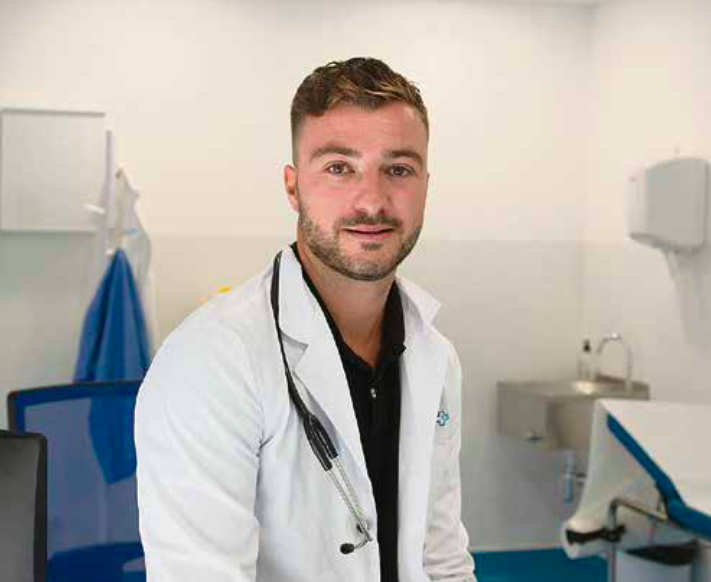

KREON 10000

Ask a doctor about a prescription for KREON 10000

How to use KREON 10000
INSTRUCTIONS FOR MEDICAL USE OF THE MEDICINAL PRODUCT LETRAM (LETRAM)
Composition
The active substance is levetiracetam; 1 tablet contains 250 mg, 500 mg or 1000 mg of levetiracetam; excipients: cornstarch, sodium croscarmellose, povidone, colloidal anhydrous silicon dioxide, talc, magnesium stearate;
film coating: 250 mg tablets: Opadry II Blue 85F20694 [polyvinyl alcohol, titanium dioxide (E 171), macrogol 3350, talc, indigo carmine (E 132)]; 500 mg tablets: Opadry II Yellow 85F32004 [polyvinyl alcohol, titanium dioxide (E 171), macrogol 3350, talc, yellow iron oxide (E 172)]; 1000 mg tablets: Opadry II White 85F18422 [polyvinyl alcohol, titanium dioxide (E 171), macrogol 3350, talc].
Pharmaceutical form
Tablets, film-coated.
Main physical and chemical properties
250 mg tablets: blue, elongated, with a score line, film-coated tablets with the inscription "N" on one side and "87" on the other; 500 mg tablets: yellow, elongated, with a score line, film-coated tablets with the inscription "N" on one side and "88" on the other; 1000 mg tablets: white, elongated, with a score line, film-coated tablets with the inscription "N" on one side and "91" on the other.
Pharmacotherapeutic group
Antiepileptic drugs. Levetiracetam. ATC code N03A X14.
Pharmacological properties
Pharmacodynamics
The active substance levetiracetam is a pyrrolidine derivative (S-enantiomer of alpha-ethyl-2-oxo-1-pyrrolidine acetamide), which is chemically different from known antiepileptic drugs.
Mechanism of action The mechanism of action of levetiracetam is not fully understood, but it is known to be different from the mechanism of action of known antiepileptic drugs. Based on in vitro and in vivo studies, it is assumed that levetiracetam does not alter the basic characteristics of nerve cells and normal neurotransmission.
In vitro studies have shown that levetiracetam affects intraneuronal Ca2+ levels by partially inhibiting the flow through N-type Ca2+ channels and reducing the release of Ca2+ from intraneuronal stores. It also partially neutralizes the inhibition of GABA- and glycine-regulated currents induced by zinc and beta-carbolines. In addition, during in vitro studies, levetiracetam bound to specific areas of rat brain tissue. This binding site is the synaptic vesicle protein 2A, which is involved in the fusion of vesicles and the release of neurotransmitters. Levetiracetam and its related analogs demonstrate an ordered affinity for binding to synaptic vesicle protein 2A, which correlates with their antiseizure activity in the audiogenic model of epilepsy in mice. These results suggest that the interaction between levetiracetam and synaptic vesicle protein 2A contributes to the antiepileptic effect of the drug.
Pharmacodynamic effects
Levetiracetam provides protection against seizures in a wide range of models of partial and primary generalized seizures in animals, without causing a pro-convulsant effect. The main metabolite is inactive.
In humans, the activity of the drug in both partial and generalized forms of epilepsy (epileptiform manifestations / photoparoxysmal reaction) confirmed the presence of a wide pharmacological profile of levetiracetam.
Pharmacokinetics
Levetiracetam is a highly soluble and permeable compound. The pharmacokinetic profile is linear and characterized by low inter- and intra-subject variability. No changes in clearance are observed after multiple doses. There is no evidence of relevant changes related to sex, race, or circadian rhythm. The pharmacokinetic profile was similar in healthy volunteers and in patients with epilepsy.
In connection with the complete and linear absorption, the plasma concentration level can be predicted based on the oral dose of levetiracetam, expressed in milligrams per kilogram (mg/kg) of body weight. Therefore, there is no need to monitor the plasma concentration level of levetiracetam.
A significant correlation between the concentration in saliva and plasma was found in adults and children (the plasma/saliva concentration ratio was in the range of 1 to 1.7 after tablet administration and 4 hours after oral solution administration).
Adults and adolescents
Absorption Levetiracetam is rapidly absorbed after oral administration. Absolute oral bioavailability is close to 100%. The maximum plasma concentration (Cmax) is reached within 1.3 hours after administration. Steady state is reached within 2 days of twice-daily administration. Cmax is usually 31 and 43 μg/mL after a single dose of 1000 mg and repeated doses of 1000 mg twice daily, respectively. The degree of absorption does not depend on the dose and is not affected by food.
Distribution There are no data on the distribution of the drug in human tissues. Neither levetiracetam nor its main metabolite binds significantly to plasma proteins (<10%). The volume of distribution of levetiracetam is between 0.5 and 0.7 L/kg, which is approximately equal to the total volume of water in the body.
Metabolism Metabolism of levetiracetam in humans is minor. The main pathway of metabolism (24% of the dose) is enzymatic hydrolysis of the acetamide group. Isoforms of liver cytochrome P450 are not involved in the formation of the main metabolite - ucb L057. Hydrolysis of the acetamide group was observed in a large number of cells, including blood cells. The metabolite ucb L057 is pharmacologically inactive.
Two secondary metabolites were also identified. One was formed as a result of hydroxylation of the pyrrolidone ring (1.6% of the dose), the other - as a result of opening of the pyrrolidine ring (0.9% of the dose).
Other undefined components accounted for only 0.6% of the dose.
No mutual conversion of levetiracetam enantiomers or its main metabolite was observed in vivo.
In vitro studies have shown that levetiracetam and its main metabolite do not inhibit the activity of major isoforms of cytochrome P450 (CYP3A4, 2A6, 2C9, 2C19, 2D6, 2E1, and 1A2), glucuronyltransferase (UGT1A1 and UGT1A6), and epoxide hydrolase. Levetiracetam also does not inhibit the glucuronidation of valproic acid in vitro.
In human hepatocyte culture, levetiracetam showed a weak effect on CYP1A2, SULT1E1, or UGT1A1. Levetiracetam caused a slight induction of CYP2B6 and CYP3A4. In vitro data and data on in vivo interaction regarding oral contraceptives, digoxin, and warfarin indicate the absence of significant induction of enzymes in vivo. Therefore, the interaction of the drug with other substances or vice versa is unlikely.
Elimination
The half-life of the drug in plasma in adults is 7 ± 1 hour and does not depend on the dose, route of administration, or repeated administration. The average total clearance was 0.96 mL/min/kg.
The main amount of the drug, on average 95% of the dose, is excreted by the kidneys (approximately 93% of the dose is excreted within 48 hours). Only 0.3% of the dose is excreted in the feces.
The cumulative excretion of levetiracetam and its main metabolite in urine was 66% and 24% of the dose, respectively, within the first 48 hours. The renal clearance of levetiracetam and ucb L057 is 0.6 and 4.2 mL/min/kg, respectively, which indicates that levetiracetam is excreted by glomerular filtration with subsequent reabsorption in the tubules, and the main metabolite is also excreted by active tubular secretion in addition to glomerular filtration. The excretion of levetiracetam correlates with creatinine clearance.
Elderly patients
In elderly patients, the half-life increases by approximately 40% (10-11 hours). This is due to the deterioration of renal function in this population (see "Method of administration and dosage").
Renal impairment
The apparent total clearance of levetiracetam and its main metabolite correlates with creatinine clearance. Therefore, patients with moderate and severe renal impairment are recommended to adjust the maintenance daily dose of levetiracetam according to creatinine clearance (see "Method of administration and dosage").
In patients with anuria in the terminal stage of kidney disease, the half-life was approximately 25 and 3.1 hours, respectively, during the period between dialysis sessions and during dialysis. During a typical 4-hour dialysis session, 51% of levetiracetam was excreted.
Hepatic impairment
In patients with mild and moderate liver impairment, the clearance of levetiracetam did not change. In most patients with severe liver impairment, the clearance of levetiracetam was decreased by more than 50% due to concomitant renal insufficiency (see "Method of administration and dosage").
Pediatric population: children aged 4-12 years
After oral administration of a single dose of the drug (20 mg/kg) in children with epilepsy (aged 6-12 years), the half-life of levetiracetam was 6 hours. The apparent clearance, corrected for body weight, was approximately 30% higher than in adults with epilepsy.
After repeated oral administration of the drug (20-60 mg/kg/day) in children with epilepsy (aged 4-12 years), levetiracetam was rapidly absorbed. Cmax was observed within 0.5-1.0 hours after administration. Cmax and the area under the pharmacokinetic curve increased linearly and depended on the dose. The half-life was approximately 5 hours, and the apparent total clearance was 1.1 mL/min/kg.
Clinical characteristics
Indications
Monotherapy (first-line treatment) for the treatment of: partial seizures with secondary generalization or without it in adults and adolescents aged 16 years and older, in whom epilepsy is diagnosed for the first time.
As adjunctive therapy for the treatment of: partial seizures with secondary generalization or without it in adults, adolescents, and children aged 6 years and older with epilepsy; myoclonic seizures in adults and adolescents aged 12 years and older with juvenile myoclonic epilepsy; primary generalized tonic-clonic seizures in adults and adolescents aged 12 years and older with idiopathic generalized epilepsy.
Contraindications
Hypersensitivity to levetiracetam, to other pyrrolidine derivatives, or to any excipient of the medicinal product.
Interaction with other medicinal products and other types of interactions
Antiepileptic drugs Postmarketing data from clinical studies conducted in adults indicate that levetiracetam does not affect the level of concentration in serum of existing antiepileptic drugs (phenytoin, carbamazepine, valproic acid, phenobarbital, lamotrigine, gabapentin, and primidone) and that antiepileptic drugs do not affect the pharmacokinetics of levetiracetam.
There is also no evidence of clinically significant drug interaction in children, as in adults, who take levetiracetam at a dose of up to 60 mg/kg/day.
A retrospective assessment of drug interaction in children and adolescents with epilepsy (aged 4-17 years) confirmed that adjunctive therapy with oral levetiracetam did not affect the concentration in serum at steady state when co-administered with carbamazepine and valproate. However, the data suggest that the clearance of levetiracetam will be 20% higher in children taking antiepileptic drugs that induce enzymes. Dose adjustment is not required.
Probenecid Probenecid (500 mg 4 times a day) blocks renal tubular secretion, inhibits renal clearance of the main metabolite, but not levetiracetam itself. However, the concentration of this metabolite remains low.
Methotrexate It has been reported that concomitant administration of levetiracetam and methotrexate reduces the clearance of methotrexate, leading to an increase/prolongation of methotrexate concentration in the blood to potentially toxic levels. The level of methotrexate and levetiracetam in the blood should be carefully monitored in patients taking these two drugs concomitantly.
Oral contraceptives Other pharmacokinetic interactions Levetiracetam at a daily dose of 1000 mg does not alter the pharmacokinetics of oral contraceptives (ethinyl estradiol and levonorgestrel); endocrine indices (luteinizing hormone and progesterone levels) did not change. Levetiracetam at a daily dose of 2000 mg does not alter the pharmacokinetics of digoxin and warfarin; prothrombin time values remained unchanged. Digoxin, oral contraceptives, and warfarin, in turn, do not affect the pharmacokinetics of levetiracetam when co-administered.
Laxatives In individual cases, it has been reported that the effectiveness of levetiracetam is reduced when taking the osmotic laxative macrogol with the oral form of levetiracetam. Therefore, macrogol should not be taken orally within 1 hour before and within 1 hour after taking levetiracetam.
Food and alcohol The degree of absorption of levetiracetam does not depend on food intake, but the rate of absorption is slightly reduced when taken with food. There are no data on the interaction of levetiracetam with alcohol.
Special warnings and precautions for use
Renal impairment
Patients with renal impairment may require dose adjustment of levetiracetam. In patients with severe liver impairment, it is recommended to assess renal function before determining the dose of the medicinal product (see "Method of administration and dosage").
Acute kidney injury
The use of levetiracetam has been very rarely associated with acute kidney injury, with a time to onset ranging from a few days to several months.
Haematological abnormalities
Haematological abnormalities have been rarely reported and were usually transient; however, in some cases, they were associated with more severe complications. In case of development of haematological parameters abnormalities (e.g. neutropenia, thrombocytopenia, and pancytopenia) or if the patient develops unexplained bleeding and/or bruising, a full haematological investigation should be performed.
Suicidal ideation and behaviour
Suicidal ideation and behaviour have been reported in patients treated with antiepileptic drugs, including levetiracetam, in several indications. A meta-analysis of randomised placebo-controlled trials of antiepileptic drugs has also shown a small increased risk of suicidal ideation and behaviour. The mechanism of this risk is not understood and the available data do not exclude the possibility of an increased risk for levetiracetam.
Therefore, patients should be monitored for signs of suicidal ideation and behaviours and appropriate treatment should be considered. Patients (and caregivers of patients) should be advised to seek medical advice should signs of suicidal ideation or behaviour emerge.
Neuropsychiatric reactions
Levetiracetam may cause psychotic symptoms and behavioural changes, including irritability and aggression. Patients should be monitored for signs of neuropsychiatric reactions and should be advised to seek medical advice should such symptoms arise.
Seizure exacerbation
As with other antiepileptic drugs, in rare cases, levetiracetam may increase the frequency or severity of seizures, particularly at the beginning of the treatment or during dose adjustment. This paradoxical effect was most frequently reported during the first month of treatment and in patients with a history of seizure exacerbation on other antiepileptic drugs.
Prolongation of QT interval
Rare cases of QT interval prolongation have been reported during the post-marketing period. Levetiracetam should be used with caution in patients with QT interval prolongation, patients taking drugs that are known to affect the QT interval, and patients with relevant clinical conditions (e.g. heart failure, hypokalaemia).
Children
The tablet formulation is not adapted for use in infants and children under 6 years of age.
Available data in children do not suggest impact on growth, puberty, and cognitive and/or motor functions; however, the potential impact of levetiracetam on the developing brain is unknown.
Use during pregnancy and lactation
Women of childbearing potential
Special precautions should be taken when using levetiracetam in women of childbearing potential. Treatment with levetiracetam should be reviewed when a woman is planning pregnancy. As with all antiepileptic drugs, it is essential to balance the benefits of therapy with the risk of uncontrolled epilepsy to the mother and the fetus.
It is recommended to prescribe monotherapy, as therapy with multiple antiepileptic drugs may be associated with a higher risk of congenital malformations than monotherapy, depending on the combination of drugs.
Pregnancy
A large amount of post-marketing data from pregnant women taking levetiracetam (over 1800 women, of which 1500 women took the drug during the first trimester) does not indicate an increased risk of major congenital malformations. There is only limited data on the development of the nervous system in children exposed to monotherapy with levetiracetam in utero. However, existing epidemiological studies (approximately 100 children) do not suggest an increased risk of disorders or developmental delay of the nervous system. Levetiracetam can be used during pregnancy if it is clinically necessary. In this case, the lowest effective dose should be used.
Physiological changes during pregnancy may affect levetiracetam plasma concentrations. During pregnancy, a decrease in levetiracetam plasma concentrations has been observed. The decrease is most pronounced during the third trimester (up to 60% of the pre-pregnancy concentration). Pregnant women receiving levetiracetam should be closely monitored.
Breast-feeding
Levetiracetam is excreted in human breast milk. Therefore, breast-feeding is not recommended. However, if levetiracetam is necessary, the benefits and risks of treatment should be weighed, and the importance of breast-feeding should be considered.
Fertility
There is no effect on fertility in animal studies. The potential risk to humans is unknown, as there are no clinical data available.
Ability to influence the reaction rate when driving vehicles or working with other mechanisms
Levetiracetam has a minor or moderate influence on the ability to drive vehicles or work with other mechanisms. Due to possible individual sensitivity, some patients may experience drowsiness, dizziness, and other symptoms related to the effect on the central nervous system, especially at the beginning of treatment or during dose increases. Therefore, such patients should be cautious when engaging in activities that require increased attention, such as driving a car or working with other mechanisms. Patients are advised to refrain from driving vehicles or working with other mechanisms until it is established that their ability to do so is not impaired.
Method of administration and dosage
Tablets should be taken orally, with a sufficient amount of water, during or between meals. When taken orally, levetiracetam may have a bitter taste. The daily dose is divided into 2 equal doses.
Partial seizures
Recommended dose for monotherapy (patients aged 16 years and older) and adjunctive therapy is the same and is indicated below.
All indications
Adults (≥ 18 years) and adolescents (12-17 years) with a body weight of ≥ 50 kg The initial therapeutic dose is 500 mg twice daily. This is the initial dose prescribed on the first day of treatment. However, the doctor may prescribe a lower initial dose of 250 mg twice daily based on the assessment of the reduction in seizure frequency compared to potential side effects. This dose may be increased to 500 mg twice daily after 2 weeks.
Depending on the clinical response and tolerability of the drug, the daily dose may be increased to a maximum of 1500 mg twice daily. The dose can be changed by 250 mg or 1000 mg/day (500 mg twice daily) every 2-4 weeks.
Children aged 6 years and adolescents (12-17 years) with a body weight of < 50 kg
The doctor should prescribe the most suitable pharmaceutical form, dosage, and release form, depending on the body weight, age, and calculated dose.
The initial dose for a child or adolescent with a body weight of 25 kg should be 250 mg twice daily, and the maximum dose should be 750 mg twice daily.
Children with a body weight of > 50 kg should be dosed according to the scheme for adults.
See above, subsection "Adults (≥ 18 years) and adolescents (12-17 years) with a body weight of ≥ 50 kg" for all indications.
Adjunctive therapy for infants aged 1-6 months
Infants should be given the drug in the form of an oral solution.
Children
The tablet formulation is not recommended for children under 6 years of age.
Levetiracetam oral solution should be used in infants from 1 month of age and children under 6 years of age.
Overdose
Symptoms In overdose, symptoms such as drowsiness, agitation, aggression, depression, respiratory depression, and coma have been observed.
Treatment After acute overdose, it is necessary to rinse the stomach or induce vomiting. There is no specific antidote for levetiracetam. If necessary, symptomatic treatment should be performed, including hemodialysis (up to 60% of levetiracetam and 74% of the main metabolite are excreted).
Undesirable effects
The most common adverse reactions reported were nasopharyngitis, somnolence, headache, increased fatigue, and dizziness. The safety profile presented is based on a pooled analysis of data from placebo-controlled clinical trials for all indications, in which a total of 3416 patients received levetiracetam. These data are supplemented by the use of levetiracetam in relevant open-label studies and post-marketing experience.
The safety profile of levetiracetam is generally similar across age groups (adults and children) for the established epilepsy indications.
Adverse reactions reported in clinical trials (in adults, adolescents, children, and infants from 1 month of age) and during the post-marketing period are listed in Table 3 by system organ classes and frequency of occurrence. Adverse reactions are presented in order of decreasing seriousness, and their frequency is defined as follows: very common (≥ 1/10); common (≥ 1/100, <1/10); uncommon (≥ 1/1000, <1/100); rare (≥ 1/10000, <1/1000); very rare (<1/10000).
| System organ classes by MedDRA | Frequency groups | ||||
| Very common | Common | Uncommon | Rare | Very rare | |
| Infections and infestations | Nasopharyngitis | Infection | |||
| Blood and lymphatic system disorders | Thrombocytopenia, leucopenia | Pancytopenia, neutropenia, agranulocytosis | |||
| Immune system disorders | Drug reaction with eosinophilia and systemic symptoms (DRESS), hypersensitivity (including angioedema and anaphylaxis) | ||||
| Metabolic and nutrition disorders | Anorexia | Weight increased or decreased | Hyponatraemia | ||
| Psychiatric disorders | Depression, hostility / aggression, anxiety, insomnia, nervousness / irritability | Suicidal attempts, suicidal thoughts, psychotic disorders, abnormal behaviour, hallucinations, anger, confusion, panic attacks, affective lability / mood changes, agitation | Suicide, personality disorders, thought disorders, delirium | Obsessive-compulsive disorder** | |
| Nervous system disorders | Somnolence, headache | Seizures, balance disorders, dizziness, lethargy, tremor | Amnesia, memory impairment, coordination disorders / ataxia, paraesthesia, attention disorders | Choreoathetosis, dyskinesia, hyperkinesia, gait disturbances, encephalopathy, seizure exacerbation, malignant neuroleptic syndrome* | |
| Eye disorders | Diplopia, blurred vision | ||||
| Ear and labyrinth disorders | Vertigo | ||||
| Cardiac disorders | QT interval prolongation on ECG | ||||
| Respiratory, thoracic and mediastinal disorders | Cough | ||||
| Gastrointestinal disorders | Abdominal pain, diarrhoea, dyspepsia, vomiting, nausea | Pancreatitis | |||
| Hepatobiliary disorders | Liver function test abnormalities | Liver failure, hepatitis | |||
| Renal and urinary disorders | Acute kidney injury | ||||
| Skin and subcutaneous tissue disorders | Rash | Alopecia, eczema, pruritus | Toxic epidermal necrolysis, Stevens-Johnson syndrome, erythema multiforme | ||
| Musculoskeletal and connective tissue disorders | Muscle weakness, myalgia | Rhabdomyolysis and increased creatine phosphokinase levels in blood* | |||
| General disorders and administration site conditions | Asthenia / increased fatigue | ||||
| Injury, poisoning and procedural complications | Injury | ||||
* The incidence is significantly higher in Japanese patients compared to patients of non-Japanese origin.
** During post-marketing surveillance, very rare cases of obsessive-compulsive disorder (OCD) were reported in patients with OCD or psychiatric disorders in their history.
Description of individual adverse reactions
The risk of anorexia is higher when topiramate and levetiracetam are used concomitantly.
In cases of alopecia, hair regrowth was observed in some cases after discontinuation of levetiracetam.
In cases of pancytopenia, bone marrow suppression was observed in some cases.
In cases of pancytopenia, bone marrow suppression was established in some cases.
Encephalopathy cases were usually observed at the beginning of treatment (from several days to several months) and were reversible after discontinuation of treatment.
Children
A total of 190 patients aged 1 month to 4 years received levetiracetam in placebo-controlled and open-label add-on studies. 60 of these patients received levetiracetam in placebo-controlled studies. In patients aged 4-16 years, a total of 645 patients received levetiracetam in placebo-controlled and open-label add-on studies. 233 of these patients received levetiracetam in placebo-controlled studies. In both age groups, these data are supplemented by post-marketing experience.
In addition, in a post-marketing safety study, 101 infants under 12 months of age received treatment with the drug. No new safety data on the use of levetiracetam in infants with epilepsy under 12 months of age have been obtained.
The safety profile of levetiracetam is generally similar across different age groups and for all approved epilepsy indications.
The results of the safety assessment in children, obtained in placebo-controlled clinical trials, were consistent with the safety profile of levetiracetam in adults, except for adverse reactions related to behaviour and psyche, which were more frequent in children than in adults. In children and adolescents aged 4-16 years, vomiting (very common, 11.2%), irritability (common, 3.4%), mood changes (common, 2.1%), affective lability (common, 1.7%), aggression (common, 8.2%), and behavioural abnormalities (common, 5.6%) and lethargy (common, 3.9%) were observed more frequently than in other age groups or in the overall safety profile. In infants and children aged 1 month to 4 years, irritability (very common, 11.7%) and coordination disorders (common, 3.3%) were observed more frequently than in other age groups or in the overall safety profile.
A safety study in children assessed the impact of levetiracetam on cognitive and neuropsychological parameters in children aged 4-16 years with partial seizures. Levetiracetam was not different (did not show inferiority) from placebo in terms of changes in the "Attention and Memory - Leiter R" scale, the total memory screening score in the population according to the protocol. The results related to behavioural and emotional functions indicated an increase in aggressive behaviour in patients treated with levetiracetam, which was determined using standardized and systematic tools (CBCL - Achenbach Child Behavior Checklist). However, in patients who received levetiracetam in a long-term open-label study with follow-up of long-term outcomes, on average, no deterioration in behavioural and emotional function was observed, including aggression scores, which were not worse than baseline.
Reporting of suspected adverse reactions
Reporting of suspected adverse reactions after authorization of the medicinal product is important. It allows continued monitoring of the benefit/risk balance of the medicinal product. Healthcare professionals and pharmacists are required to report any suspected adverse reactions via the automated information system for pharmacovigilance at: https://aisf.dec.gov.ua.
Shelf life
3 years.
Storage conditions
Store in the original packaging at a temperature not exceeding 25°C.
Keep out of the reach of children.
Packaging
10 tablets in a blister pack, 3 blister packs in a carton.
Category of release
Prescription only.
Manufacturer
Hetero Labs Limited.
Location of the manufacturer and address of the place of business
Unit III, Formulation Plot No 22 - 110 IDA, Jeedimetla, Hyderabad, 500 055 Telangana, India.
Unit III, Formulation Plot No 22 - 110 IDA, Jeedimetla, Hyderabad, 500 055 Telangana, India.
- Country of registration
- Active substance
- Prescription requiredNo
- Manufacturer
- This information is for reference only and does not constitute medical advice. Always consult a licensed doctor before taking any medication. Oladoctor is not responsible for medical decisions based on this content.
- Alternatives to KREON 10000Dosage form: tablets, 10 tablets in a blisterActive substance: multienzymes (lipase, protease etc.)Manufacturer: Торрент Фармасьютікалс ЛтдPrescription not requiredDosage form: capsules, 10 capsules in a blisterActive substance: multienzymes (lipase, protease etc.)Manufacturer: ПрАТ "ТехнологPrescription not requiredDosage form: capsules, 10 capsules in a blisterActive substance: multienzymes (lipase, protease etc.)Manufacturer: ПрАТ "ТехнологPrescription not required
Alternatives to KREON 10000 in other countries
The best alternatives with the same active ingredient and therapeutic effect.
Alternative to KREON 10000 in Poland
Alternative to KREON 10000 in Spain
Online doctors for KREON 10000
Discuss dosage, side effects, interactions, contraindications, and prescription renewal for KREON 10000 – subject to medical assessment and local rules.














